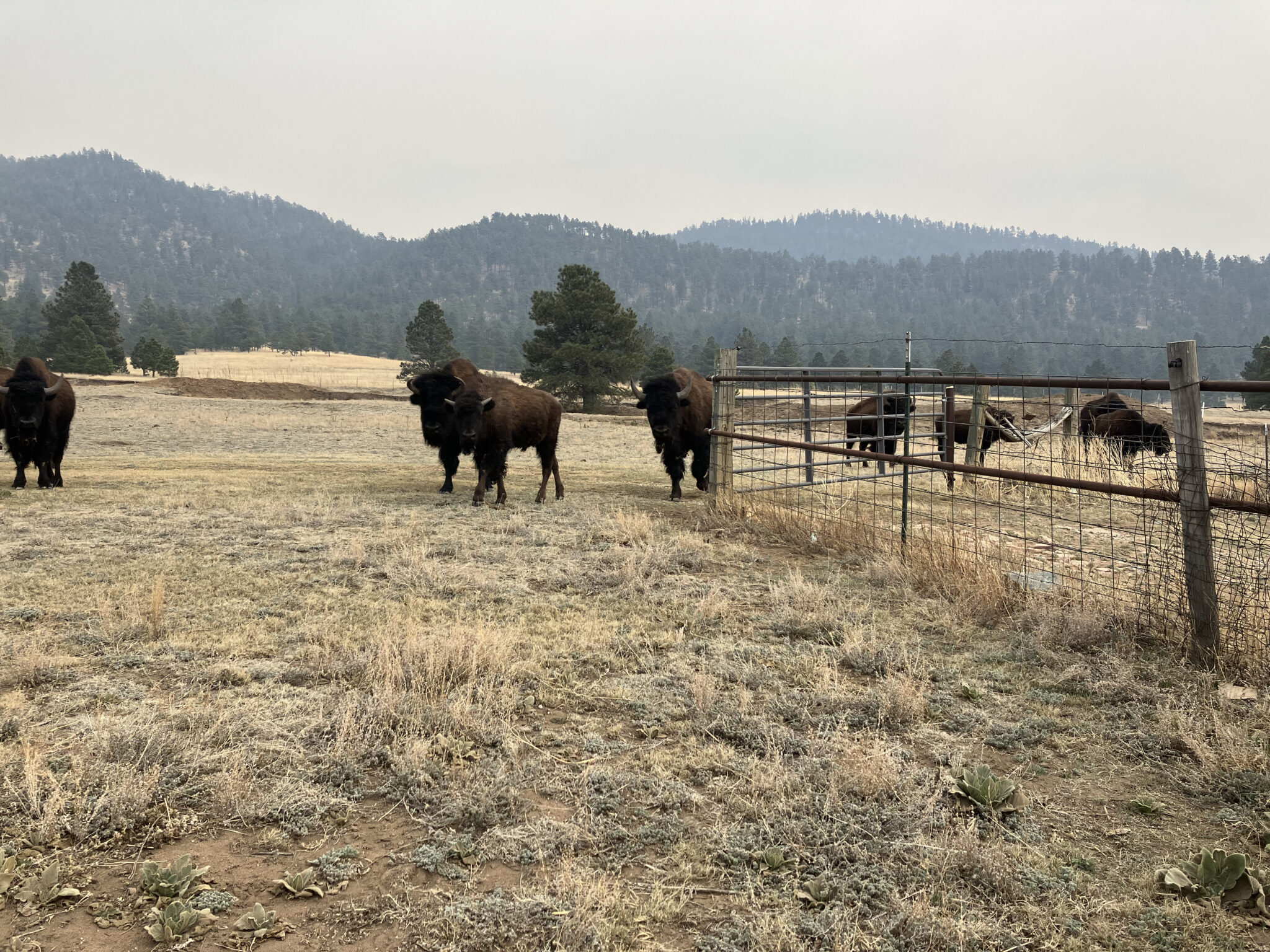
- Details
- By Native News Online Staff
U.S. Sen. Martin Heinrich (D-N.M.), Ranking Member of the Senate Energy and Natural Resources Committee, and U.S. Rep. Melanie Stansbury (D-N.M.), a member of the House Natural Resources Committee, have reintroduced the Buffalo Tract Protection Act. This legislation seeks to permanently prohibit mineral development on four parcels of Bureau of Land Management (BLM) land in southern Sandoval County, including the Buffalo Tract and the Crest of Montezuma. U.S. Sen. Ben Ray Luján (D-N.M.) and U.S. Rep. Teresa Leger Fernández (D-N.M.) are original cosponsors of the bill.
“The protection of New Mexico’s lands and waters is integral to our cultures, ways of life, and our natural resources. We must fight to protect these resources now more than ever,” said Stansbury. “Working collaboratively with our Pueblo and Tribal nations, Sandoval County, and local stakeholders, I am proud to re-introduce the Buffalo Tract Protection Act. This bill will help permanently protect these sacred and ancestral lands of San Felipe and Santa Ana Pueblos, safeguard the health of our communities, and preserve our ecosystems for generations to come.”
"New Mexico’s public lands are sacred to our communities and heritage. I am proud to join Senator Heinrich and Representative Stansbury in introducing this crucial legislation to help protect our public lands for years to come,” said Luján. “This legislation responds to the significant concerns of rural, Tribal, and traditional communities about the harmful impacts of gravel mining and safeguards our landscapes and wildlife for future generations.”
“I’m proud to be an original co-sponsor of the Buffalo Tract Protection Act,” said Leger Fernández. “The Buffalo Tract contains sacred landscapes that hold deep cultural and spiritual meaning for the Pueblos of Santa Ana and San Felipe and generations of New Mexicans. This bill protects those lands from mining and honors the voices of the communities who have spoken clearly for over a decade. We’re making sure these lands remain a place where people can experience their beauty for generations to come — not a site for gravel pits that threaten their beauty, wildlife, and history.”
For years, local communities, Tribes, and homeowners have called for the protection of the Buffalo Tract and Crest of Montezuma—lands that hold deep ancestral and spiritual importance for the Pueblos of San Felipe and Santa Ana. These areas also offer accessible outdoor recreation, including hiking, sightseeing, and hunting.
In 2023, the Bureau of Land Management (BLM) launched a public engagement process to explore management options for four public land parcels in the Placitas area. Following strong public support, the BLM temporarily withdrew mineral rights on approximately 4,200 acres for 50 years. The Buffalo Tract Protection Act would solidify these protections permanently in federal law.
Sen. Heinrich first introduced the bill in 2016 alongside then-Senator Tom Udall (D-N.M.) after extensive collaboration with local stakeholders to protect public health and preserve the traditional uses of these lands. Representative Stansbury took the lead on the House version of the bill after joining Congress in 2021.
A map of proposed boundaries is here.
The text of the bill is here.
The Buffalo Tract Protection Act is endorsed by Santa Ana Pueblo, San Felipe Pueblo, Land Use Protection Trust, New Mexico Wild, Eastern Sandoval Citizens Association, Sundance Mesa Homeowners Association, La Mesa Homeowners Association, Anasazi Homeowners Association, Pathways: Wildlife Corridors of NM, and Sandoval County Commission.
A list of endorsements and statements of support are here.
More Stories Like This
50 Years of Self-Determination: How a Landmark Act Empowered Tribal Sovereignty and Transformed Federal-Tribal RelationsCherokee Nation Launches Digital Dictionary to Support Language Revitalization
Prairie Band Potawatomi Nation Chairman Addresses Homeland Security Contract
Lancaster County to Recognize Conestoga-Susquehannock Tribe on Massacre Anniversary
How the Gaming Economy Helps Tribes Navigate Shifting Policies
Help us defend tribal sovereignty.
At Native News Online, our mission is rooted in telling the stories that strengthen sovereignty and uplift Indigenous voices — not just at year’s end, but every single day.
Because of your generosity last year, we were able to keep our reporters on the ground in tribal communities, at national gatherings and in the halls of Congress — covering the issues that matter most to Indian Country: sovereignty, culture, education, health and economic opportunity.
That support sustained us through a tough year in 2025. Now, as we look to the year ahead, we need your help right now to ensure warrior journalism remains strong — reporting that defends tribal sovereignty, amplifies Native truth, and holds power accountable.
 The stakes couldn't be higher. Your support keeps Native voices heard, Native stories told and Native sovereignty defended.
The stakes couldn't be higher. Your support keeps Native voices heard, Native stories told and Native sovereignty defended.
Stand with Warrior Journalism today.
Levi Rickert (Potawatomi), Editor & Publisher


